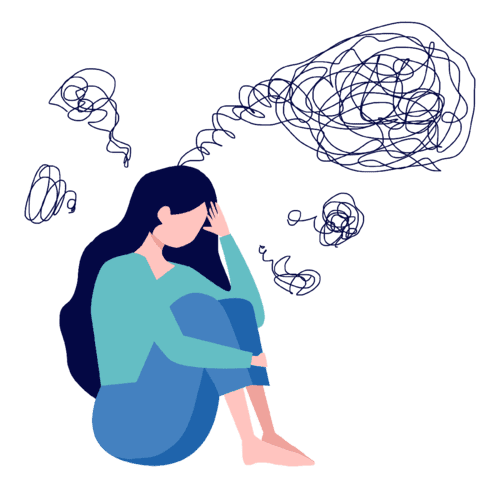Homophobic Assessment
Free Homophobic Assessment

What is Homophobic Assessment?
Homophobic assessment refers to the evaluation of an individual’s attitudes, beliefs, or behaviors that are biased, discriminatory, or prejudiced against people who identify as LGBTQ+ (lesbian, gay, bisexual, transgender, queer, or other non-heteronormative orientations). This assessment aims to identify and measure the presence of homophobia, which can manifest as fear, hatred, or intolerance towards LGBTQ+ individuals. Such assessments may involve questionnaires, interviews, or observational methods to gauge the extent of homophobia in a person or within a society. The goal is to raise awareness, promote understanding, and ultimately combat homophobia to foster inclusivity and equal rights for LGBTQ+ individuals.
Who can benefit from this Homophobic Assessment?
A “Homophobic Assessment” is not a recognized or ethical tool. Assessments related to sexual orientation should never promote discrimination, prejudice, or harm towards LGBTQ+ individuals. Instead, society benefits from promoting inclusivity, acceptance, and understanding of diverse sexual orientations. Education, awareness, and sensitivity training can benefit individuals, organizations, and communities by fostering empathy, reducing stigma, and creating a more inclusive environment for everyone. It is crucial to prioritize respect and equality for all, rather than engaging in assessments that perpetuate homophobia or discrimination.
Homophobic Assessment Accuracy
Homophobic assessments, often used to measure one’s attitudes towards homosexuality, vary in accuracy. They typically rely on self-reporting, which can be influenced by social desirability bias—people may not admit to homophobic views due to societal norms. Consequently, these assessments might not always reflect an individual’s true feelings. To enhance accuracy, researchers use a combination of surveys, implicit association tests, and behavioral measures. While such assessments provide valuable insights, they may not capture the complexity of human attitudes fully. Therefore, their accuracy can be limited, emphasizing the need for nuanced and culturally sensitive approaches to understand and address homophobia.
Types of Homophobic Assessment
Verbal Homophobia:
This involves the use of derogatory language or slurs to insult or belittle people based on their sexual orientation or gender identity. It can range from casual name-calling to hate speech.
Social Homophobia:
Social homophobia is the exclusion or avoidance of LGBT+ individuals in social settings, such as refusing to be friends with them or excluding them from social events because of their sexual orientation or gender identity.
Institutional Homophobia:
This type of homophobia refers to discriminatory policies, practices, or laws that target LGBT+ individuals. For example, laws that restrict marriage equality, adoption by same-sex couples, or workplace discrimination against LGBT+ people.
Internalized Homophobia:
Some individuals who identify as LGBT+ may internalize societal homophobia, leading them to feel shame or self-hatred about their own sexual orientation or gender identity. This can result in a range of negative mental health outcomes.
Violent Homophobia:
At its most extreme, homophobia can lead to physical violence or hate crimes against LGBT+ individuals. This includes physical assault, harassment, and even murder motivated by anti-LGBT+ sentiment.
Religious Homophobia:
Some religious beliefs can contribute to homophobia, with certain interpretations of religious texts being used to justify discrimination or prejudice against LGBT+ individuals.
Handling Homophobic Issues
Handling homophobic issues requires sensitivity, empathy, and a commitment to promoting inclusivity and respect for all individuals, regardless of their sexual orientation. Here are some steps and guidelines for addressing homophobic issues effectively:
- Educate Yourself: Start by educating yourself about LGBTQ+ issues, including the experiences and challenges faced by individuals who identify as LGBTQ+. Understanding the terminology and the history of the LGBTQ+ rights movement is essential.
- Listen Actively: When someone comes to you with a homophobic issue or concern, listen attentively without judgment. Give them space to express their feelings and experiences. Sometimes, people just need someone to talk to.
- Empathize: Show empathy and validate the person’s feelings. Phrases like, “I can see why you’re upset,” or “That must have been really difficult for you,” can be helpful. Avoid saying things like, “I know how you feel” if you don’t personally identify as LGBTQ+, as this may come across as insincere.
- Speak Out Against Homophobia: If you witness or hear someone making homophobic remarks or engaging in discriminatory behavior, don’t stay silent. Speak up respectfully and assertively. Explain why such comments or actions are hurtful and inappropriate.
- Educate Others: Use opportunities to educate others about LGBTQ+ issues and the harm caused by homophobia. Share accurate information and resources to dispel misconceptions and stereotypes.
- Promote Inclusivity: Encourage environments and spaces that are inclusive and welcoming to LGBTQ+ individuals. This can include workplace policies, school curricula, or community initiatives that promote diversity and inclusion.
- Support LGBTQ+ Organizations: Consider supporting LGBTQ+ organizations, both financially and through volunteer work. These organizations often provide vital resources and support to those affected by homophobia.
- Report Discrimination: If you witness or experience homophobic discrimination in a workplace, school, or any other institution, report it to the appropriate authorities or HR department. Ensure that there are mechanisms in place to address such issues.
- Offer Resources: Provide information about resources and support networks available to those dealing with homophobia. This could include LGBTQ+ helplines, counseling services, or support groups.
- Lead by Example: Model inclusive and respectful behavior in your own interactions. Treat everyone with kindness and respect, regardless of their sexual orientation. This sets a positive example for others to follow.
- Stay Informed: Stay updated on LGBTQ+ rights and current issues. Laws and societal attitudes are constantly evolving, and it’s essential to remain informed about these changes.
- Encourage Allies: Encourage others to be allies. Allies are people who may not identify as LGBTQ+ but actively support and advocate for LGBTQ+ rights and equality.
- Respect Privacy: Respect people’s privacy regarding their sexual orientation. Some individuals may not be ready to publicly disclose their sexual orientation, and it’s important to respect their choices.
Remember that addressing homophobic issues is an ongoing process. It requires patience and persistence to create a more inclusive and accepting society. Your efforts, no matter how small, can contribute to positive change and help combat homophobia.

